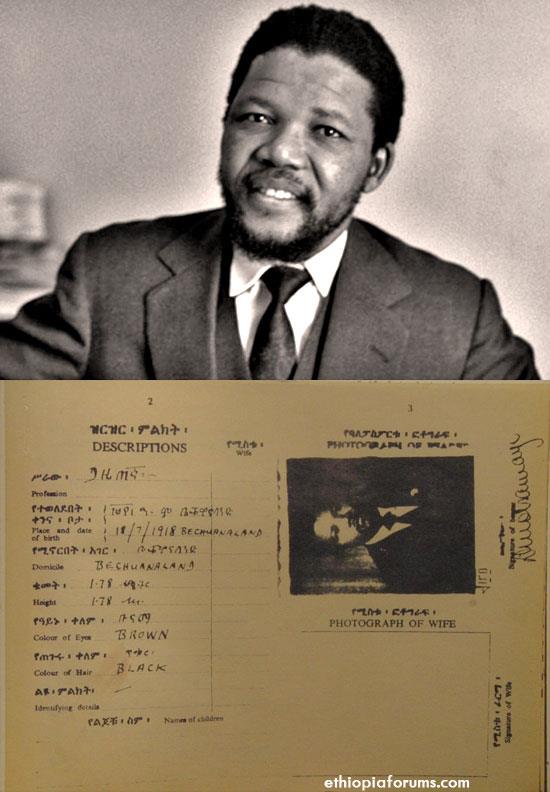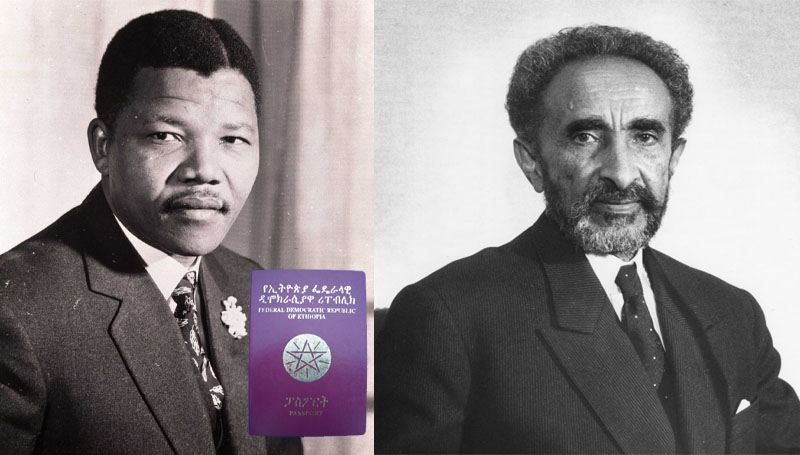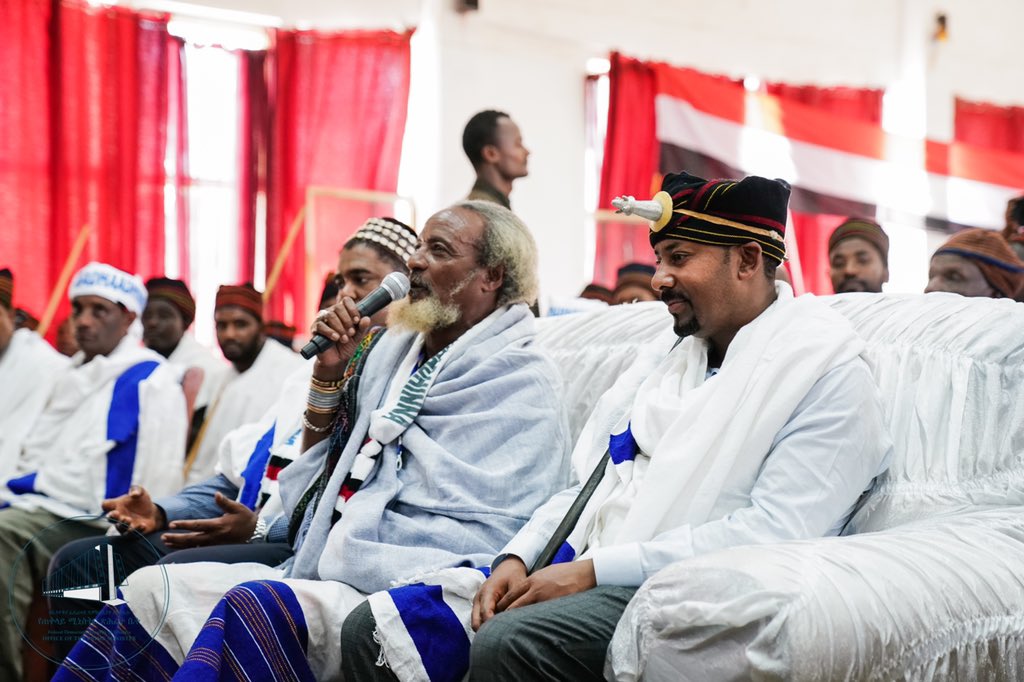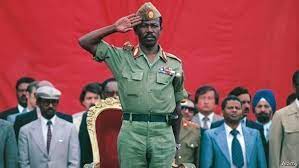Nelson Mandela, the South African anti-apartheid revolutionary and politician, had close ties to Ethiopia during his fight against apartheid in South Africa.
In 1962, Mandela traveled to Ethiopia to gather support and training for the African National Congress (ANC), which he co-founded. He was welcomed by Emperor Haile Selassie, who offered him sanctuary and support in Ethiopia.
Mandela received military training from Ethiopian freedom fighters, which he used to help establish the armed wing of the ANC, Umkhonto we Sizwe. The training he received in Ethiopia was instrumental in the success of the anti-apartheid movement in South Africa.
Mandela also met with other African leaders in Ethiopia, including Jomo Kenyatta of Kenya and Julius Nyerere of Tanzania, to discuss strategies for ending colonialism and apartheid on the African continent.
In addition to his political work, Mandela was also inspired by the culture and history of Ethiopia. He was particularly drawn to the story of the Ethiopian victory over Italian colonizers at the Battle of Adwa in 1896, which he saw as a symbol of African resistance and self-determination.

Mandela’s connection to Ethiopia continued throughout his life, and he maintained close ties with Ethiopian leaders even after his release from prison in 1990. In 1992, he visited Ethiopia again to attend the 30th anniversary of the Organization of African Unity in Addis Ababa.
Overall, Mandela’s time in Ethiopia played an important role in shaping his political ideology and activism, and his relationship with the country and its leaders remained strong throughout his life.
While Nelson Mandela was in Ethiopia, he received military training from Ethiopian freedom fighters. The training took place at a camp in the Ethiopian town of Arba Minch, which was used by the Ethiopian Patriotic Army (EPA), a rebel group fighting against the government of Emperor Haile Selassie.

The EPA provided military training to several African nationalist movements, including the ANC, and Mandela was one of the trainees. The training included lessons in guerrilla warfare, sabotage, and other military tactics that Mandela would later use in his fight against apartheid in South Africa.
Mandela was particularly impressed with the discipline and organization of the EPA fighters, who were able to operate effectively despite being vastly outnumbered and outgunned by the Ethiopian army. He drew on this experience in his own work with the ANC, where he emphasized the importance of disciplined and strategic planning in achieving political goals.
Nelson Mandela was warmly welcomed and supported by Emperor Haile Selassie, who was the leader of Ethiopia at the time.
Emperor Haile Selassie was a prominent figure in the Pan-African movement, which sought to promote unity and solidarity among African nations. He was a strong supporter of the ANC and other liberation movements in Africa, and he provided political and financial assistance to these groups.
Emperor Haile Selassie offered Mandela and other ANC leaders sanctuary in Ethiopia, allowing them to live and work freely in the country without fear of persecution by the South African government. He also provided training and other resources to help the ANC in its struggle against apartheid. Mandela was deeply appreciative of Haile Selassie’s support and friendship, and he remained in contact with the emperor throughout his life. In fact, when Haile Selassie was overthrown in a coup in 1974, Mandela spoke out in his defense and called for his release from house arrest.

Captain Guta Dinka was an Ethiopian soldier who was assigned to protect Nelson Mandela during his stay in Ethiopia in the early 1960s. He was a member of the Imperial Bodyguard, which was responsible for protecting the Ethiopian emperor, Haile Selassie.
According to Mandela’s autobiography “Long Walk to Freedom,” Captain Guta Dinka was a trusted and dedicated bodyguard who took his duties very seriously. He was responsible for ensuring Mandela’s safety during his time in Ethiopia, which was no small task given the political volatility of the region at the time.
Mandela and Captain Guta Dinka developed a close friendship during their time together. Mandela was impressed by Captain Guta Dinka’s courage and loyalty, and he credited him with saving his life on at least one occasion. In his autobiography, Mandela wrote that when he was nearly caught by the Ethiopian police during a mission to leave Ethiopia, Captain Guta Dinka came to his rescue by claiming that Mandela was his personal guest and should not be detained.
Mandela and Captain Guta Dinka developed a close friendship during their time together, and Mandela referred to him as a “brother in arms.” In his autobiography, Mandela wrote that he was impressed by Captain Guta Dinka’s courage and loyalty, and he credited him with saving his life on at least one occasion.
After Mandela left Ethiopia, he and Captain Guta Dinka lost touch for many years. However, in the 1990s, Mandela returned to Ethiopia and was reunited with his former bodyguard. Mandela was overjoyed to see him again and thanked him for his service and friendship.
Captain Guta Dinka passed away in 2010 at the age of 85. He was remembered by many as a brave and loyal soldier who served his country with distinction, and as a trusted friend and ally to Nelson Mandela in the struggle against apartheid.
The story of Captain Guta Dinka’s role in protecting Nelson Mandela in Ethiopia is a testament to the deep bonds of solidarity and friendship that were forged between African nations and leaders during the struggle against colonialism and apartheid.
Here are some sources to refer to:



I went promotion on ur page
you can email us directly on facebook.